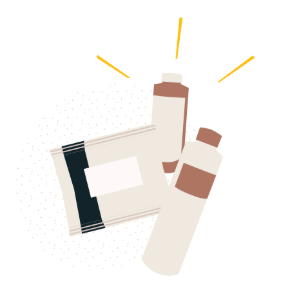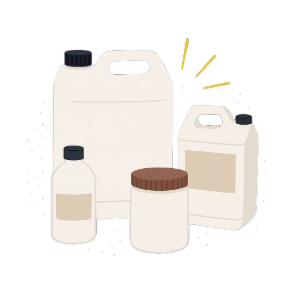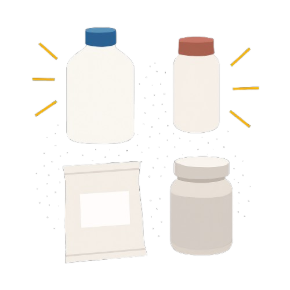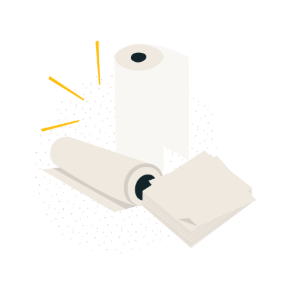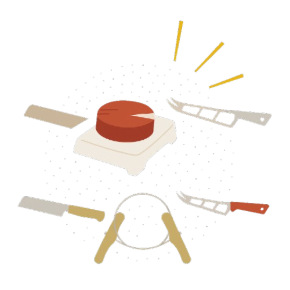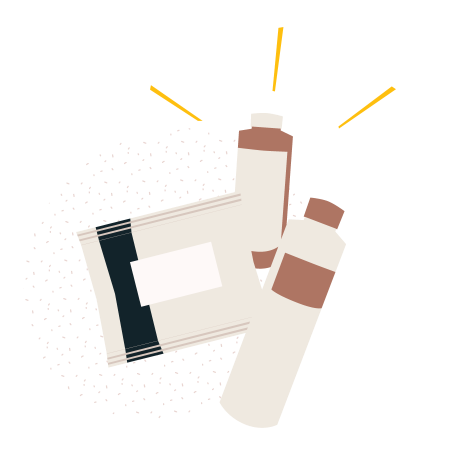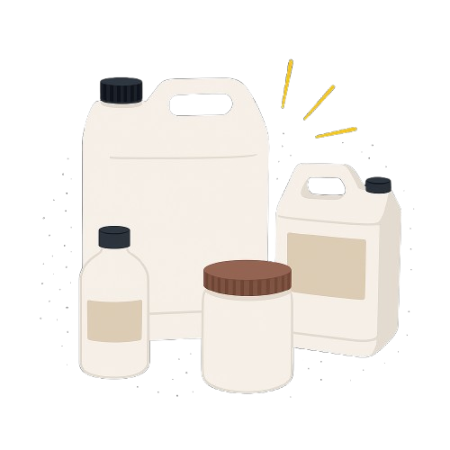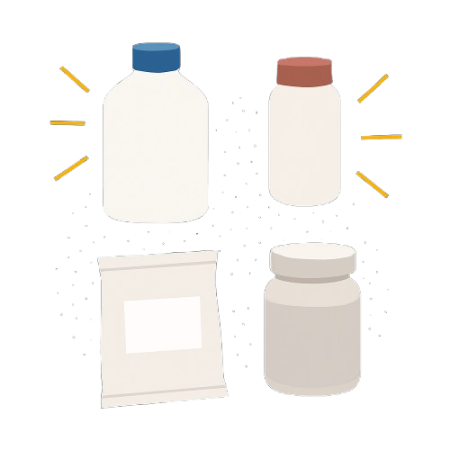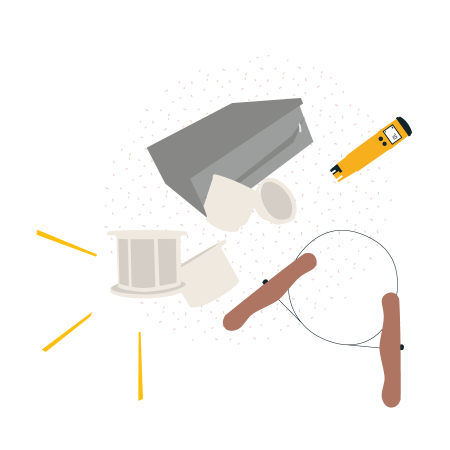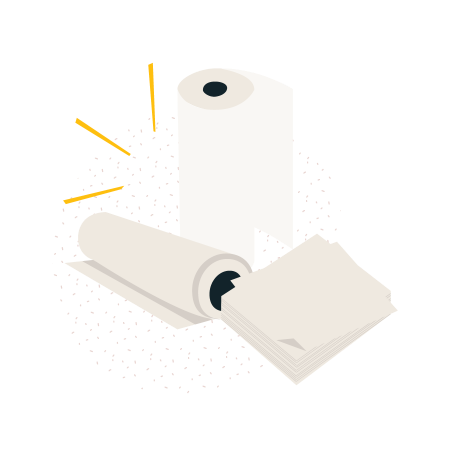Shop
LM 57 Freeze-dried 20 DCU
Freeze-dried concentrated lactic starter for the direct vat inoculation of milk and milk bases.
RA 24 Freeze-dried 125 DCU
Freeze-dried concentrated lactic starter for the direct vat inoculation of milk and milk bases.
Nataseen®-S (50 % Natamycin 50 % Sodium chloride) 500 g
Natamycin, the active ingredient in Nataseen®-S, also known as pimaricin, is a fungicide of the polyene macrolide group produced by natural strains of Streptomyces natalensis or of Streptococcus lactis, it is especially effective against yeasts and moulds.
Nataseen®-H (95 % Natamycin) 500 g
Natamycin, the active ingredient in Nataseen®-H, also known as pimaricin, is a fungicide of the polyene macrolide group produced by natural strains of Streptomyces natalensis or of Streptococcus lactis, it is especially effective against yeasts and moulds.
Nataseen®-WP
GEO 17 Freeze-dried 10 D
Maturation/ ripening culture made up of Penicilium candidum spores.
Penicilium candidum is the ordinary name of Penicilium camemberti.
Direct inoculation of cheese milk.
Dilution for use in spray just before use.
We do not accept any liability in case of undue application.
YC-380 Freeze-dried 50 u
Thermophilic YoFlex® culture.
The culture will produce yoghurt with strong flavor, medium viscosity and some post-acidification.
Suitable for cup set, stirred and drinking yoghurt.
PR1 Swing Freeze-dried 10 u
A selected single stain ripening culture with origin in traditional cheese making.
SWING® P.R.cultures are an essential ingredient in the ripening process of blue mold cheeses.
The cultures will upon germination develop a blue mycelium in the cheese and contribute to the typical flavor (by lipolysis) and texture (proteolysis) of the cheese.
The culture may be used in production of Danablu, Roquefort type, Stilton and other blue cheese types.
LAF 5 Swing Freeze-dried 10 u
Selected yeast single strain with origin in traditional French cheese making.
SWING® LAF cultures are an important tool in cheese making since they may be used to affect curd neutralization, texture and flavor.
Yeasts are common in traditional raw milk cheeses but are rarely found in industrially produced cheeses.
Therefore adding selected and controlled yeast cultures to the cheese may improve quality.
MM 101 Freeze-dried 250 DCU
A blend of defined strains of lactic bacteria for direct vat inoculation of milk, milk bases.
The culture is a freeze-dried powder.
YoFlex Mild 1.0 Freeze-dried 50 u
Mesophilic aromatic culture, type LD.
The culture produces flavor and CO2.
This range provides cultures with fast acidification properties at a low inoculation rate.
The culture is primarily used in the manufacturing of Continental semi-hard cheese varieties with eyes, e.g. Gouda, Edam, Leerdam and Havarti.
YF-L812 Freeze-dried 50 u
Thermophilic YoFlex® culture.
The culture will produce yoghurt with very mild flavor, extra high viscosity and very low post-acidification.
Suitable for cup set, stirred and drinking yoghurt.
RA 26 Freeze-dried 250 DCU
Lyophilized lactic ferment concentrate for the direct inoculation of milk and milk bases
PS-1 Freeze-dried 5 u
Selected propionic acid bacteria culture.
The culture is primarily used for the production of Swiss-type cheeses, such as Emmental, Gruyère, Greve and similar types where the typical propionic acid aroma and eye formation are desired.
The culture is normally applied in combination with lactic cultures, such as Streptococcus thermophilus , Lactobacillus helveticus, Lactobacillus delbrueckii subsp.bulgaricus and LD cultures.
The culture ferments lactate resulting in the formation of propionic and acetic acids and large amounts of carbon dioxide.
Propionic acid cultures grow slowly in milk and have a low proteolytic activity.
YC-X11 Freeze-dried 50 u
Thermophilic YoFlex® culture.
The culture will produce yoghurt with mild flavor, high viscosity and low post-acidification.
Suitable for cup set, stirred and drinking yoghurt.
MM 101 Freeze-dried 50 DCU
Freeze-dried concentrated lactic starter for the direct vat inoculation and milk bases.
ABY-3 Freeze-dried 50 u
Thermophilic lactic acid culture.
Contains the documented probiotic strains BB-12 ® and LA-5®.
The strains have a long history of safe use.
The culture will produce yoghurt or fermented milk with high body, very mild flavor and very low post-acidification.
Suitable for cup set, stirred and drinking yoghurt.
CHN-22 Freeze-dried 50 u
Mesophilic aromatic culture, type LD.
The culture produces flavor and CO2.
This range provides cultures with fast acidification properties at a low inoculation rate.
The culture is primarily used in the manufacturing of Continental semi-hard cheese varieties with eyes, e.g. Gouda, Edam, Leerdam and Havarti.
GEO CH Swing Freeze-dried 10 u
A selected single strain ripening culture with origin in traditional French cheese making.
The SWING® GEO cultures contributes to the flavor, texture, and appearance of cheese.
The culture is available as a conidia suspension.
The culture may be used in production of many types of cheeses including white mold surface (e.g.Camembert type), smeared and mixed rind, soft and semi-hard, and blue mold cheeses.
FreshQ 2 Freeze-dried 100 u
The FreshQ® cultures are combinations of traditional lactic acid bacteria that deliver inhibition of unwanted yeast and moulds in fermented dairy products.
The effect is obtained through active participation in the natural fermentation.
The cultures are added in combination with the normal starter culture in the production of fermented dairy products.
The cultures are developed for application in e.g. Fresh cheese, yoghurt, sour cream.
CHN-19 Freeze-dried 50 u
Mesophilic aromatic culture, type LD.
The culture produces flavor and CO2.
This range provides cultures with fast acidification properties at a low inoculation rate.
As a principal rule 1000 U of freeze-dried DVS cultures will correspond to 100 l of active bulk starter.
However, specific usage rates should be determined experimentally before a new application.
BL-2 Swing Freeze-dried 10 u
A selected single strain culture with origins in traditional cheese making.
Brevibacterium is one of the most important surface bacteria for its role in coloring the surface of the cheese, and producing flavor.
The culture may be applied in the production of smeared soft and semi-hard cheeses, mold soft cheese, or mixed rind cheeses.
XPL-1 Freeze-dried 50 u
Blend of mesophilic aromatic eXact® culture, type LD and thermophilic culture.
The eXact-Plus culture produces texture, flavor and CO2.
Manufacturing of the following fermented milk products:
- Kefir type products
- Crème fraiche/sour cream Fermented milks produced with XPL cultures will have extra high texture, high flavor and medium CO2.
TT033 Swing Freeze-dried 10 u
Selected mold strains with origin in traditional cheese making.
SWING® PC culture is an essential ingredient in the ripening process of white mold cheeses for its role in coloring the surface of the cheese, and contributing to the flavor and texture, as well as protection against contaminants.
The strains may be used on soft cheese with lactic features, camembert/brie types, Tomme, UF soft cheeses, stabilized soft cheeses and soft cheese with rennet features.

